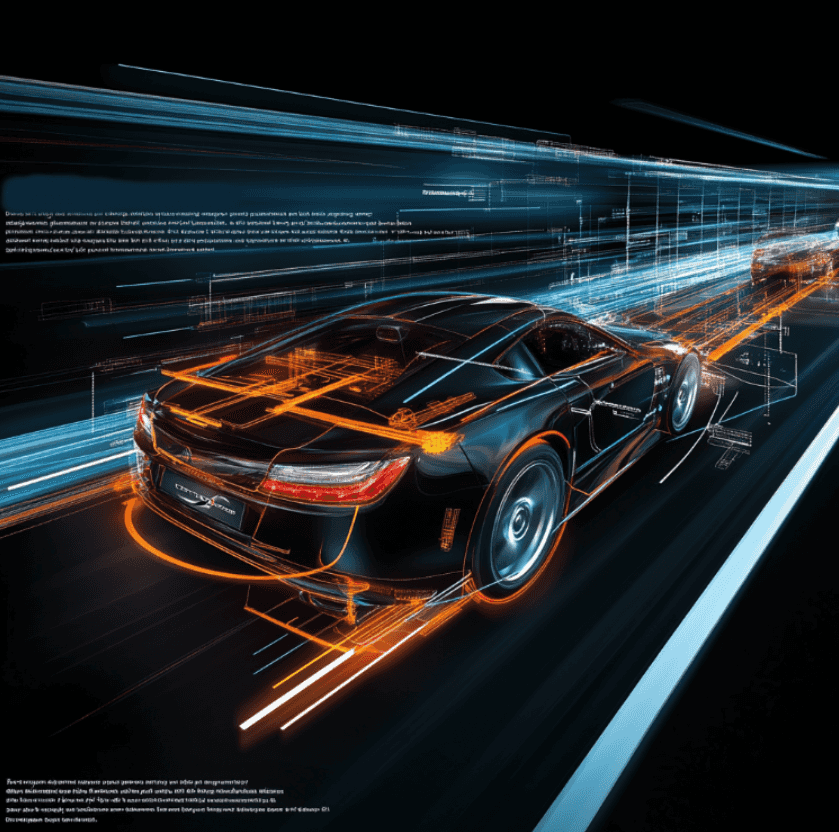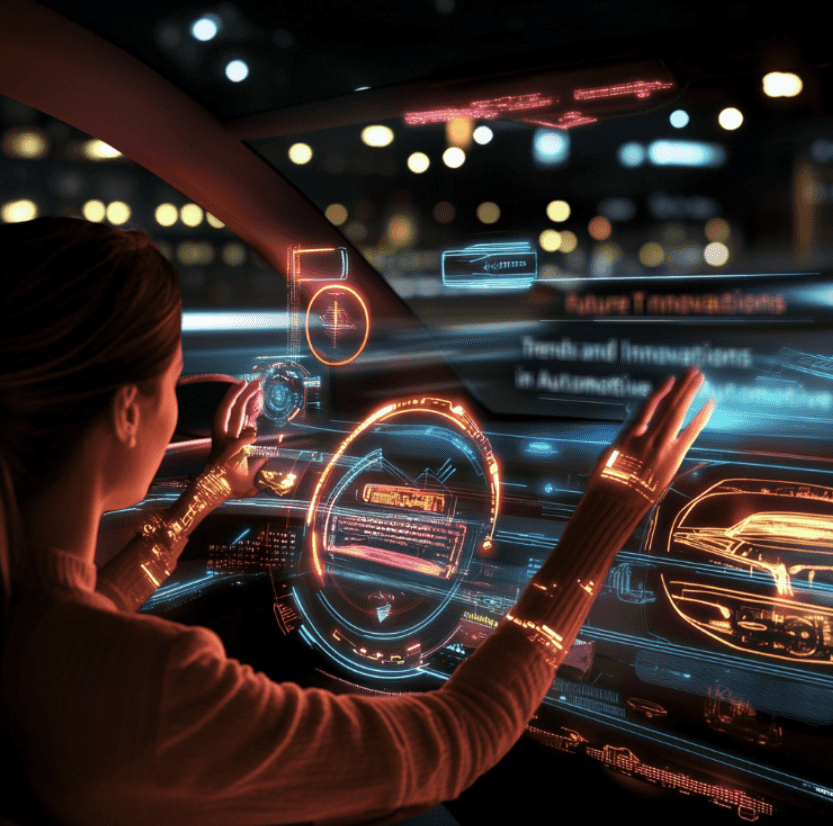Automotive Software Development: Driving Innovation Forward
March 3, 2025

5 minutes to read
Automotive software development is revolutionizing the way vehicles operate, making them smarter, safer, and more efficient. Modern cars are no longer just mechanical machines; they are complex systems powered by advanced software. Advanced systems—sophisticated automotive software solutions—are now integral to features such as engine management, infotainment, and autonomous driving technologies. From engine management to autonomous driving, software plays a crucial role in enhancing performance, safety, and user experience. These advancements have enabled key features like autonomous driving capabilities and autonomous driving technologies, which are essential for improving vehicle intelligence and safety. The importance of software in enabling the fully autonomous vehicle cannot be overstated. Overarching these changes, the automotive sector has become a rapidly evolving market where software development is driving innovation and creating significant new opportunities.
The integration of artificial intelligence, machine learning, and cloud computing has accelerated innovation, enabling real-time data processing, predictive maintenance, and seamless connectivity. Over-the-air updates and vehicle-to-everything (V2X) communication are transforming the industry, ensuring continuous improvements and safer roads. Automotive systems require specialized development to ensure security, performance, and future-proofing, especially for connected and autonomous vehicles. Collaborations with mobile app development agencies have further enhanced this evolution, as they create companion mobile solutions that integrate with in-car systems to provide intuitive user interfaces and improved connectivity. These partnerships are also driving the creation of innovative automotive solutions that enhance vehicle functionality and customer experience.
However, automotive software development also comes with challenges, including cybersecurity risks, regulatory compliance, and the complexity of integrating multiple technologies. As the industry moves forward, revolutionizing automotive software development through cloud-based environments and advanced AI/ML integration is transforming the industry. Software defined vehicles are enabling more flexible, scalable, and innovative vehicle architectures, further shaping the future of transportation. The role of software in shaping the future of transportation will only grow, driving innovation to new heights.
Introduction to Automotive Software
Automotive software is at the heart of modern vehicles, powering everything from essential engine control functions to cutting-edge features like autonomous driving and seamless connectivity. As the automotive software industry continues to evolve, automotive software solutions are being designed to meet the growing demand for safer, more efficient, and highly connected vehicles. These software solutions enable automotive companies to deliver advanced features that enhance vehicle performance, improve customer satisfaction, and provide a significant competitive advantage in a rapidly changing market.
With the rise of autonomous vehicles, integrating software with hardware components has become more critical than ever, ensuring seamless communication between various vehicle systems. Technological advancements are driving the development of sophisticated automotive software that supports everything from real-time diagnostics to over-the-air updates, making modern vehicles smarter and more responsive. As connected vehicles become the norm, automotive software is playing a vital role in shaping the future of mobility, enabling new levels of vehicle functionality and user experience.
Benefits of Automotive Software
The adoption of automotive software brings a host of benefits to the automotive industry, transforming the way vehicles operate and how car owners interact with their vehicles. Advanced driver assistance systems (ADAS), such as adaptive cruise control and automatic emergency braking, are making roads safer by reducing the risk of accidents and supporting drivers in challenging situations. Automotive software solutions are also enhancing fuel efficiency and operational efficiency by optimizing engine performance and enabling predictive maintenance, which helps prevent costly breakdowns and reduces downtime.
Remote diagnostics powered by automotive software allow for real-time monitoring and troubleshooting, ensuring that issues can be addressed quickly and efficiently. For car owners, personalized infotainment systems and customizable vehicle settings create a more enjoyable and tailored driving experience. The integration of advanced infotainment systems and connected vehicle technologies is revolutionizing the automotive industry, paving the way for autonomous vehicles and smarter, more interactive in-car environments. Ultimately, automotive software is driving innovation, improving vehicle safety, and delivering greater value to both manufacturers and consumers.
Applications of Automotive Software
Automotive software is utilized across a wide spectrum of applications within the automotive industry, supporting everything from core vehicle operations to advanced driver assistance and fleet management. Engine control units (ECUs) and transmission control units rely on sophisticated software to manage engine performance, optimize fuel consumption, and ensure smooth operation. Advanced driver assistance systems (ADAS) leverage automotive software to enable features like lane-keeping, collision avoidance, and adaptive cruise control, significantly enhancing vehicle safety.
In the realm of autonomous driving, automotive software is the backbone of autonomous driving systems, processing sensor data and making real-time decisions to navigate complex environments. Predictive maintenance applications use software to monitor vehicle health and anticipate service needs, reducing unexpected failures and improving operational efficiency. Automotive software also plays a crucial role in fleet management, allowing fleet owners to track vehicle locations, monitor performance, and optimize routes for maximum efficiency. Whether in passenger cars, commercial vehicles, or electric and hybrid models, automotive software is essential for delivering high performance, safety, and connectivity across various vehicle systems.
Evolution of Automotive Software

The evolution of automotive software has transformed vehicles from purely mechanical machines into advanced, interconnected systems. Early automotive software was limited to basic functions like fuel injection and engine control. However, as technology progressed, software became integral to vehicle safety, performance, and user experience. The introduction of Electronic Control Units (ECUs) enabled advanced features such as ABS, traction control, and adaptive cruise control. Building automotive software presents unique challenges, requiring specialized approaches to ensure security, scalability, and seamless integration within vehicles. A skilled development team is essential for overcoming technical challenges and successfully implementing advanced features like electrification, connectivity, and autonomy.
With the rise of connectivity, modern cars now incorporate IoT, AI, and cloud computing, enabling features like over-the-air updates, autonomous driving, and predictive maintenance. Infotainment systems have also evolved, integrating voice assistants, smartphone connectivity, and real-time navigation. Today, teams develop software using advanced methodologies and cloud-based environments, resulting in faster and more efficient vehicle software integration.
Looking ahead, automotive software will continue evolving with AI-driven automation, enhanced cybersecurity, and vehicle-to-everything (V2X) communication, paving the way for smarter, safer, and more efficient transportation. There is a growing demand for custom automotive software and custom software to address industry-specific challenges, support future updates, and ensure seamless integration with legacy systems. Custom software development is crucial for creating reliable, scalable, and secure automotive systems that meet the needs of autonomous and connected vehicles. Developing automotive software enables personalized vehicle features and enhances the overall user experience.
| Component | Function | Impact |
| Powertrain Software |
|
|
| ADAS |
|
|
| Infotainment Systems |
|
|
Key Technologies in Automotive Software

Automotive software relies on key technologies that enhance vehicle performance, safety, and connectivity. One of the most critical is embedded systems, which use Electronic Control Units (ECUs) to manage engine performance, braking, and stability control. Embedded software plays a vital role in enabling real-time communication between hardware and software components, ensuring seamless operation and system responsiveness. Integration of software with various vehicle components, such as infotainment and ADAS, relies on standard protocols to achieve seamless communication. Artificial intelligence and machine learning are also transforming the industry by enabling advanced driver-assistance systems (ADAS) and autonomous driving. These software advancements continuously enhance vehicle functionalities for an improved driving experience.
Vehicle-to-everything (V2X) communication allows cars to interact with other vehicles, infrastructure, and networks to improve traffic safety. External systems enable remote diagnostics, data exchange, and fleet management through connected vehicle solutions. Telematics systems are essential for gathering vehicle data, supporting fleet management, and enhancing connectivity and safety. Over-the-air (OTA) updates enable remote software updates, reducing the need for physical service visits. Cloud computing supports real-time data processing for navigation, diagnostics, and entertainment systems.
Cybersecurity is also crucial, protecting vehicles from hacking and unauthorized access. As automotive technology advances, these innovations will drive safer, smarter, and more efficient transportation.
| Technology | Function | Benefits |
| RTOS (Real-Time Operating Systems) |
|
|
| Cloud Computing |
|
|
| V2X Communication |
|
|
Software Development Process in the Automotive Industry
The software development process in the automotive industry is a highly structured and regulated journey, designed to ensure that automotive software meets the highest standards of safety, reliability, and performance. Automotive software developers follow established software development processes such as Agile, Waterfall, and the V-Model, each tailored to address the unique challenges of building software for complex vehicle systems. The development process typically begins with requirements gathering, followed by detailed design, implementation, rigorous testing, and thorough validation to ensure compatibility with various vehicle systems and components.
Automotive software development tools, including specialized programming languages, compilers, and debuggers, are used to create and refine software solutions that power everything from engine control to advanced infotainment systems. Functional safety is a top priority, with developers adhering to strict industry standards to mitigate risks and ensure the safe operation of all software components. Cybersecurity is also a critical consideration, as connected vehicles require robust protection against potential threats. By following a disciplined development process and leveraging advanced tools, automotive software developers are able to deliver innovative, reliable, and secure software that drives the future of the automotive industry.
Challenges in Automotive Software Development

Automotive software development faces several challenges due to the complexity and safety-critical nature of modern vehicles. The automotive software development process is a structured, multi-stage methodology involving design, implementation, integration, testing, and deployment to ensure reliable and industry-compliant software. One major issue is ensuring reliability and security, as software bugs or cyberattacks can lead to serious safety risks. Compliance with industry standards such as ISO 26262 and AUTOSAR adds another layer of complexity, requiring rigorous testing and validation.
Integration of multiple software components from different suppliers is also challenging, as compatibility issues can arise between ECUs, cloud services, and infotainment systems. The growing demand for over-the-air updates introduces risks related to data security and system stability.
Additionally, real-time processing is crucial for advanced driver-assistance systems (ADAS) and autonomous driving, requiring powerful computing capabilities. The rapid pace of technological advancements means developers must constantly adapt to new tools, programming languages, and regulations, making automotive software development a highly demanding field.
| Challenge | Impact | Solution |
| Regulatory Compliance |
|
|
| Cybersecurity |
|
|
| System Integration |
|
|
The Role of AI and Machine Learning

AI and machine learning play a crucial role in modern automotive software, enhancing safety, efficiency, and user experience. In advanced driver-assistance systems (ADAS), AI processes real-time sensor data from cameras, LiDAR, and radar to detect obstacles, pedestrians, and road signs, enabling features like automatic braking and lane-keeping assistance.
Machine learning is also essential for autonomous driving, allowing vehicles to continuously learn from traffic patterns, driver behavior, and environmental conditions. Predictive maintenance uses AI to analyze vehicle performance data, identifying potential issues before they cause failures. Additionally, AI and software are increasingly used to optimize the performance and energy efficiency of electric vehicles by managing battery management systems, which helps extend EV range and supports sustainable mobility solutions.
In infotainment systems, AI powers voice recognition, personalized recommendations, and adaptive user interfaces. AI-driven vehicle-to-everything (V2X) communication helps optimize traffic flow and reduce congestion. As AI technology advances, it will further revolutionize automotive software, leading to safer, smarter, and more autonomous vehicles.
| AI Application | Function | Benefit |
| Predictive Maintenance |
|
|
| Autonomous Driving |
|
|
| Driver Assistance Systems |
|
|
Future Trends and Innovations in Autonomous Driving

The future of automotive software is driven by innovations that enhance safety, automation, and connectivity. Autonomous driving technology will continue to evolve, with AI-powered systems improving decision-making and real-time navigation. Self driving cars, powered by sophisticated algorithms, sensors, HD maps, and advanced safety features, are revolutionizing transportation by improving safety, accessibility, and efficiency. Vehicle-to-everything (V2X) communication will enable seamless data exchange between cars, infrastructure, and pedestrians, reducing accidents and traffic congestion.
Electrification will push software advancements, optimizing battery management, energy efficiency, and charging systems. Over-the-air (OTA) updates will become more advanced, allowing continuous improvements and security patches without physical service visits.
Personalized in-car experiences will be enhanced through AI, offering intelligent voice assistants, adaptive interfaces, and predictive maintenance alerts. Cybersecurity will also remain a priority as vehicles become more connected. With these advancements, the automotive industry is set to create smarter, safer, and more efficient transportation solutions for the future.
| Trend | Description | Impact |
| Blockchain Security |
|
|
| OTA Updates |
|
|
| Advanced HMI |
|
|
Conclusion
Automotive software development is at the forefront of transforming the industry, enabling vehicles to become more intelligent, efficient, and interconnected. As technologies like AI, machine learning, and V2X communication continue to advance, they offer new opportunities for enhancing safety, performance, and user experience. Over-the-air updates, predictive maintenance, and autonomous driving are just the beginning of what’s possible.
Furthermore, collaboration with a mobile app development company has become increasingly important, as it bridges the gap between in-car systems and user-friendly mobile interfaces, enhancing connectivity and real-time control. However, with these innovations come significant challenges, such as ensuring cybersecurity, meeting regulatory standards, and managing system integration. Despite these hurdles, the future of automotive software is bright, with continuous advancements driving the industry toward smarter, safer, and more sustainable transportation solutions. The role of software in shaping the future of mobility will be crucial, as it unlocks new levels of innovation and efficiency for both manufacturers and consumers.
FREQUENTLY ASKED QUESTIONS
What is automotive software development?
How does automotive software drive innovation?
What key technologies are shaping automotive software?
What challenges are faced in automotive software development?
What future trends can we expect in automotive software?

LOOKING OFFSHORE SOFTWARE DEVELOPMENT?
We are ready to help! Get consulted with our specialists at no charge.
Here’s how you can get in touch

would you like to receive notifications about our updates?

Your subscription is confirmed.
Thank you for being with us.


